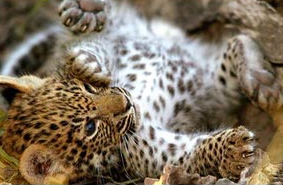These Big Five Baby African Animals Are Just Too Cute
Kruger National Park was established in 1898 to protect the wildlife of the South African Lowveld, this national park sits on over 2 million hectares of geographically diverse land. The term Big Five in Kruger National Park now refers to Africa's most popular sightseeing wildlife animals; buffalos, elephants, rhinos, lions, and leopards.
These Big Five Baby African Animals Are Just Too Cute
Cape buffalos are known to have exceptional memory and strength.
Elephants have a nimble trunk composed of 100,000 muscles with two finger-like features on the end of their trunk that they use to grab small items.
 |
| Baby Black Rhino calf walking with mom |
Baby Rhino Calf
Baby Lion Cub
 |
| Too cute African Leopard cub Wilderness Safaris |







